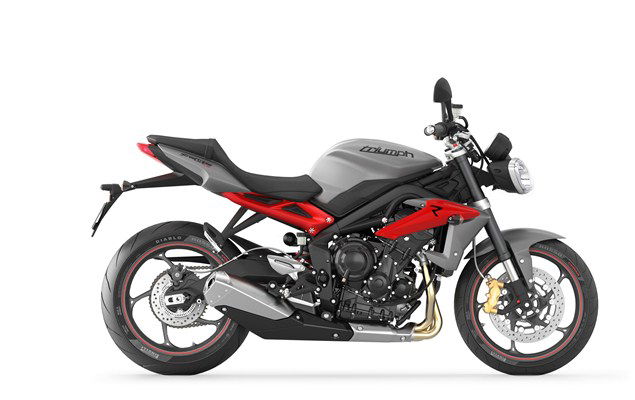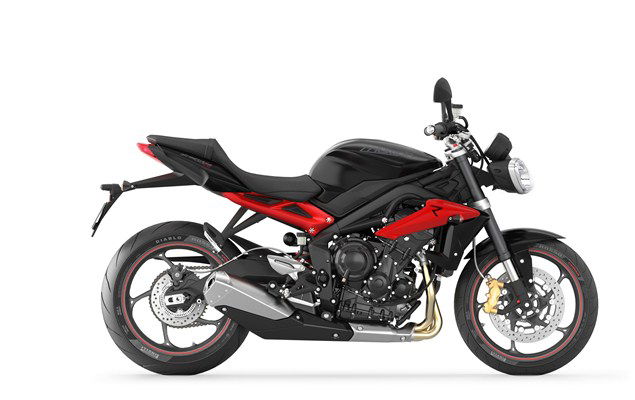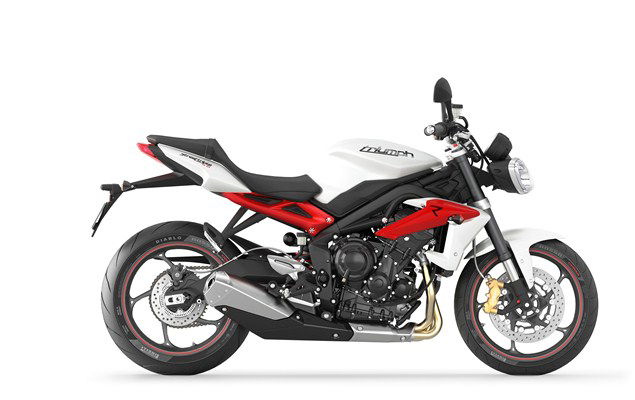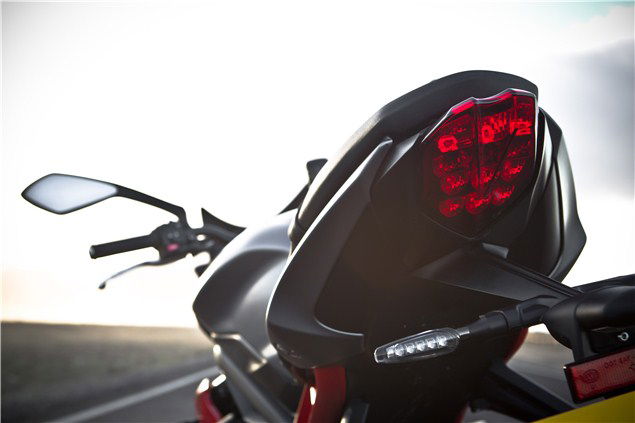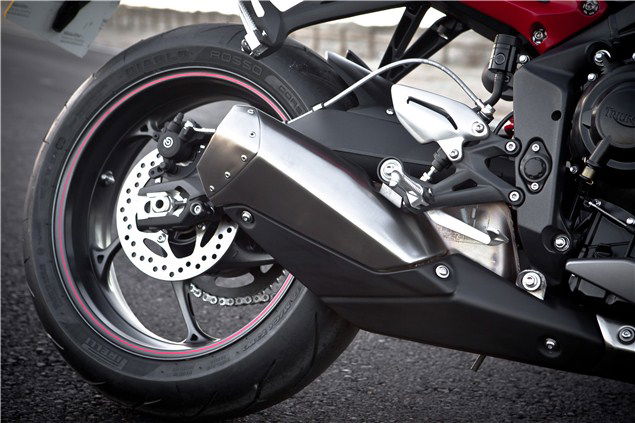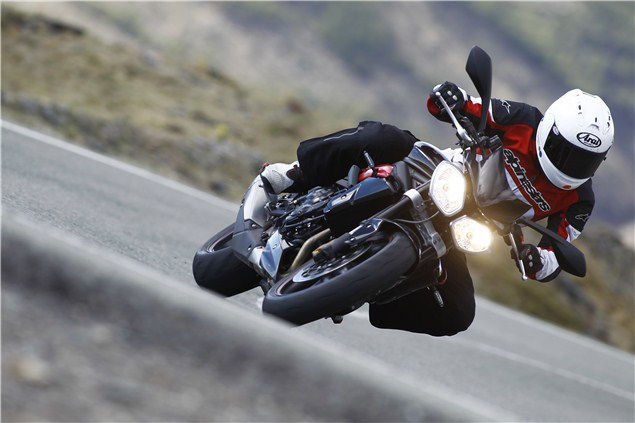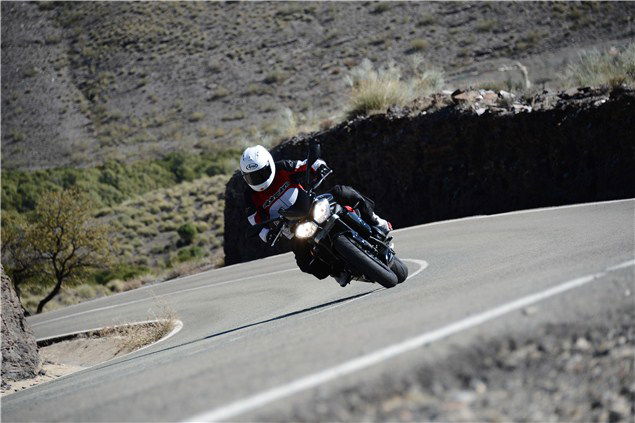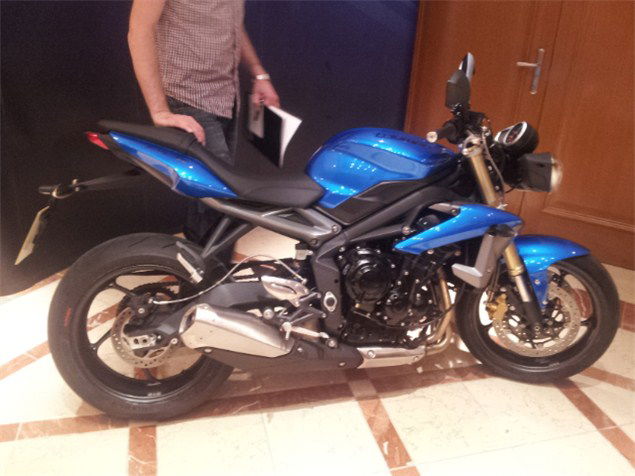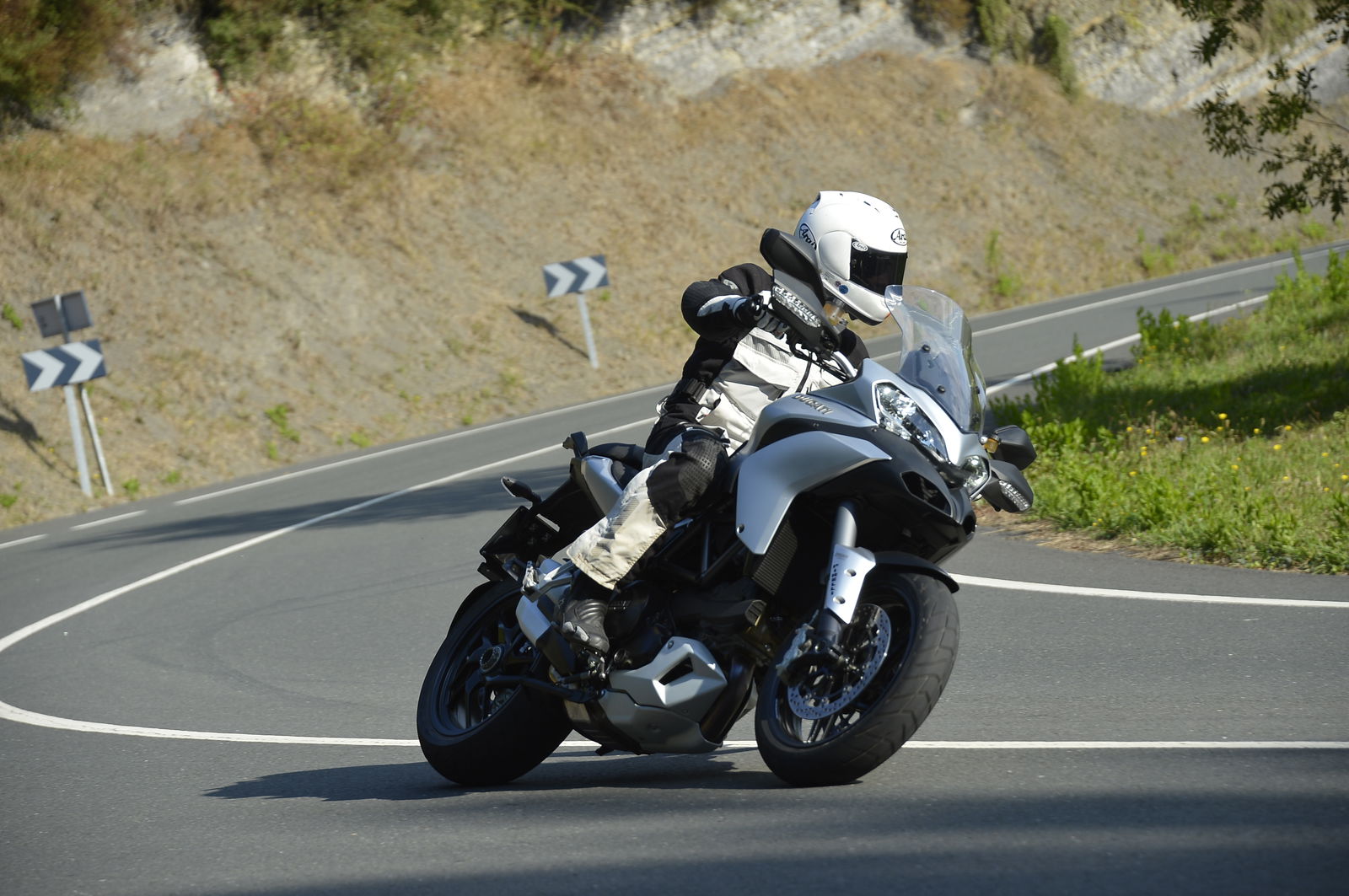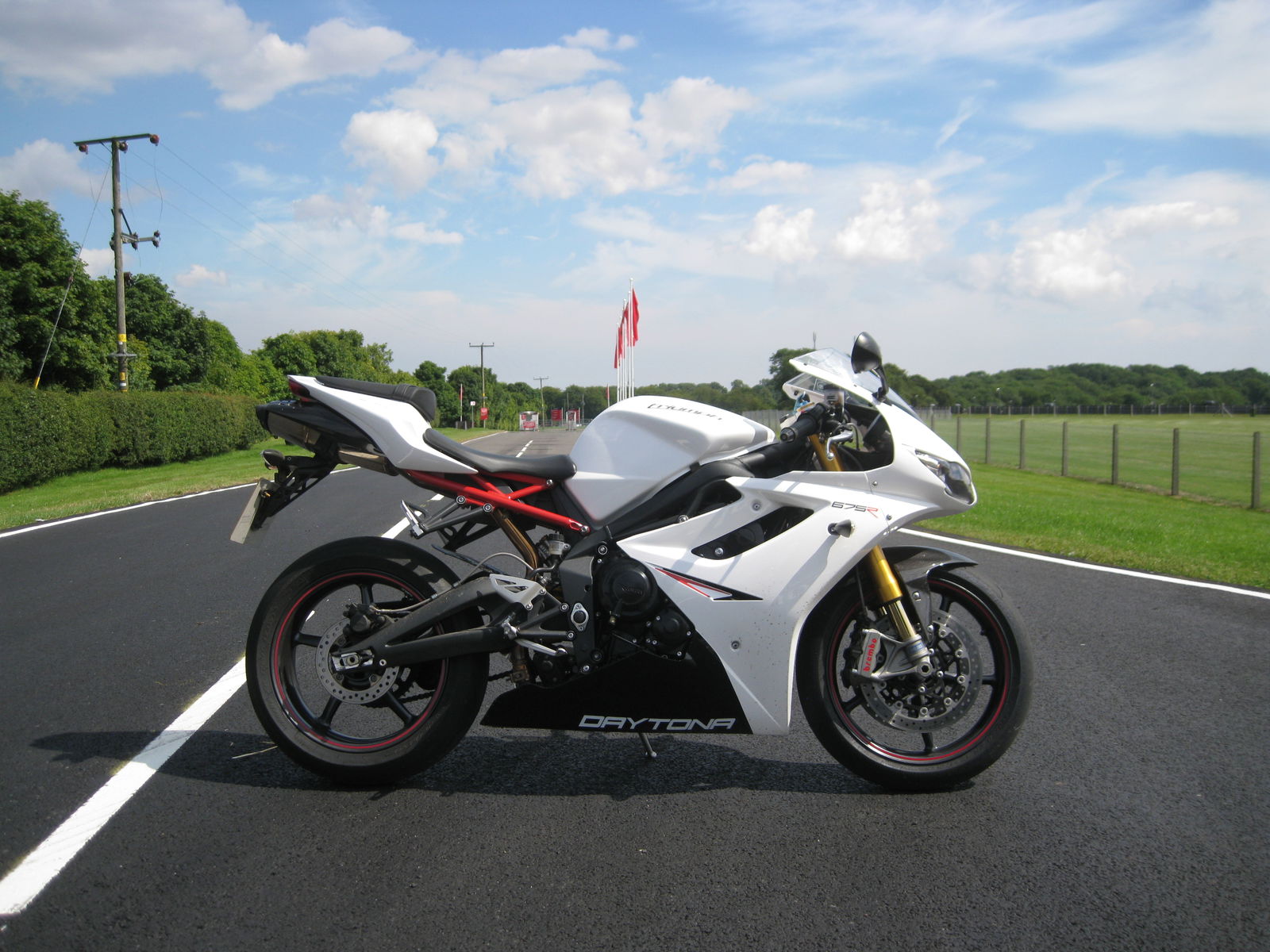2013 Triumph Street Triple R review
Triumph's most popular bike gets a big update. There's a lot riding on this one.


IN THE music industry they talk about 'the difficult' second album. It's the make or break moment for artists who've spent years perfecting their sound, only to be told they've got 6 months to do it all again; except this time they've got to re-invent themselves and set a new trend, attract thousands more fans but keep their loyal ones too.
With the Street Triple, Triumph have had their difficult second album. The first Street Triple was an instant hit, an overnight classic. It was Triumph's best-selling bike over the past 5 years. How could it not have been? Using the same motor from the year-old Daytona 675 - a bike that refused to play by the cast-iron rules of the supersports category and in doing so, stole fans, awards and sales across the world - the Street Triple wasn't just a Daytona with the fairing ripped off. It was more than the sum of (the lack of) its parts.
The difficult second album came when Triumph revamped the Street Triple for 2011, introducing 'those' headlights and a few other changes that no-one noticed because they were too busy moaning about the headlights.
So, onto the latest version, the 2013 Street Triple. It still has 'those' headlights but don't get fixed on that or you'll miss everything that's new and, let's be honest: more important.
We tested the Street Triple R, which differs from the standard Street Triple by way of better suspension (the stock bike has non-adjustable front suspension and preload adjustment on the rear), stronger brakes (radially mounted four piston calipers as opposed to floating twin-pistons) and finally a few cosmetic changes; the Street Triple R gets a rear hugger as standard, a red rear subframe, pinstripes on the wheels and a red rear spring. Everything else is the same.
Triumph told us their mission was to sharpen the styling, improve the handling, reduce the weight and increase the fun factor.
The engine remains largely the same, with a taller first gear and new throttle bodies designed to give improved fuel economy. Triumph claim the new bike will return just over 50mpg in town, compared to just under 40mpg on the outgoing model. At 50mph, they claim 68.8mpg, up from 61.4mpg. Improvements that are not to be sniffed at.
The taller first gear now means the Street Triple shares exactly the same gearbox as the Daytona 675. Does a taller first gear really make it better or does it just standardise the gearbox across the Street Triple and Daytona 675, lowering the cost of manufacturing? The cynic in me can't turn a blind eye to that one.
It tops out in 1st at 76mph, compared to 66mph on the outgoing model, which I tested the week before. Despite only a small difference in outright speed, the new taller 1st gear definitely takes a bit of that get up and go that I loved about the older bike; it helped the 675cc motor punch above its weight off the line with the welcome side-effect of the front wheel heading skyward as and when.
Talking of weight, the most significant change to the 2013 Street Triple is the 6kg weight loss. Now I know 6kg is less than the average biker scoffs for breakfast before their Sunday blast, but it's not about how much its lost but where its lost it from; all the weight saving comes from the rear of the bike.
3.6kg from the exhaust, 1kg from the revised rear wheel and caliper, 0.6kg from the swinging arm and 0.8kg from the rear end assembly. The benefits are three-fold: a 7% reduction in unsprung mass, less overall weight (dow to 183kg) and, most importantly, a change in the weight bias. The old Street Triple was rear-end heavy: 51% rear and 49% front. The 2013 Street Triple is 48% rear and 52% front.
Less is more, except when you want more wheelies. I know wheelies aren't a deal-clincher but they're crucial to the way the original bike felt. Fire the original bike off the line and that rear-biased weight, coupled with the short first gear meant the bike felt lively, the front was eager to go light, infact you'd do well to keep it on the deck. It felt like an excited puppy, tugging on its lead. When it came to wheelies, the weight and position of the exhausts helped you get the Street Triple up but also lowered the balance point, meaning everyone couldn't just wheelie a Street Triple, they were pretty good at it too. The lower weight and mass centralisation of the exhaust has changed that.
While the Street Triple has lost a touch of that lofty magic, it is, undoubtedly, easier to hustle on twisty roads. Not a bad trade-off to have, I suppose.
Sat on the bike, it's not like you can feel that change in weight distribution, the riding position has barely changed and although the Street Triple R has a 15mm taller seat height than the previous version, it's lost none of its comfort or natural throw to the bars.
Only when you get moving, at speed, does the revised weight distribution start to reveal its hand. The Street Triple R feels more stable in corners; the front goes in and stays there. There's definitely less weave and no wobble. You can manhandle it and change line if you want; it won't gets its knickers in a twist but you don't have to grab it by the scruff of the neck like you did on the original version.

